
Rubble Woman Monument: A Symbol of Resilience
A poignant memorial in Dresden honoring the Trümmerfrauen, the 'rubble women,' who rebuilt the city from the ashes of World War II, symbolizing resilience and the strength of the human spirit.
The Rubble Woman Monument in Dresden stands as a poignant reminder of the city's devastating destruction during World War II and the remarkable resilience of its women. Known as Trümmerfrauen, these women played a crucial role in clearing the rubble and rebuilding Dresden from the ashes. The monument, located near the Rathaus, honors their tireless efforts and symbolizes the strength and determination of the German people in the face of adversity. It serves as a powerful testament to the human spirit's ability to overcome even the most challenging circumstances, offering visitors a moment of reflection on the city's past and its inspiring journey of recovery. The statue is a reminder of the essential workforce in a period when labor was in short supply, and stands as a point for discussions on gender roles, recovery after war, and historical recognition.
A brief summary to Rubble Woman Monument Dresden
- Rathauspl., Dresden, Altstadt, 01067, DE
Local tips
- Take a moment to reflect on the historical significance of the monument and the sacrifices made by the Trümmerfrauen.
- Combine your visit with a tour of Dresden's Old Town to fully appreciate the city's reconstruction efforts.
- Visit the monument during the day for better visibility and photo opportunities.
Getting There
-
Walking
The Rubble Woman Monument is located on Rathausplatz, in the Altstadt (Old Town) of Dresden, making it easily accessible on foot from most central locations. From the Frauenkirche, walk west along Neumarkt, then turn left onto Landhausstraße. Continue straight until you reach Rathausplatz. The monument will be visible near the Neues Rathaus (New City Hall).
-
Public Transport
The closest tram stops are 'Pirnaischer Platz' or 'Synagoge'. Several tram lines serve these stops, including lines 3, 7, 12, and 6. From either stop, walk towards the Rathaus (City Hall). The monument is located on Rathausplatz, next to the New City Hall. A single ticket for the Dresden fare zone costs €3.40.
-
Taxi/Ride-Share
A taxi or ride-share from Dresden Hauptbahnhof (main train station) to the Rathausplatz will typically cost between €8 and €12, depending on traffic. The journey usually takes around 5-10 minutes. Ask the driver to drop you off near the Neues Rathaus; the monument is located on the square.
Discover more about Rubble Woman Monument Dresden
Iconic landmarks you can’t miss
Rubble Woman Monument Dresden
0.0 km
A poignant memorial in Dresden honoring the Trümmerfrauen, the 'rubble women,' who rebuilt the city from the ashes of World War II, symbolizing resilience and the strength of the human spirit.
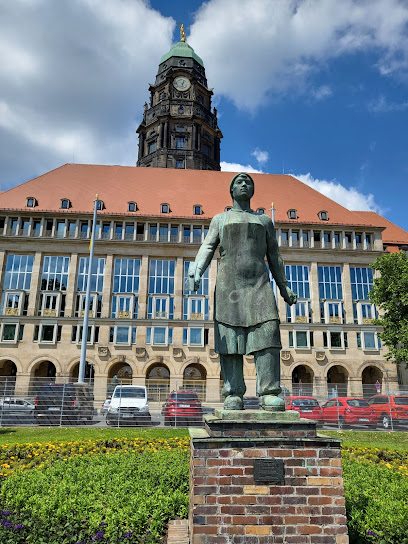
Altmarkt 1
0.3 km
Discover Dresden's historic heart at the Altmarkt, a vibrant square hosting the famous Striezelmarkt and surrounded by cultural landmarks, offering a blend of history and modern-day appeal.
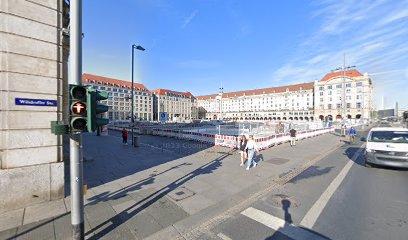
Friedrich August II Koenig Von Sachsen
0.4 km
A regal monument in Dresden's heart, commemorating King Friedrich August II and Saxony's rich history amidst the stunning architecture of the reconstructed Neumarkt.
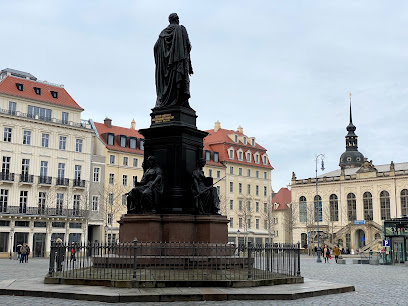
Dinglinger-Haus
0.5 km
Experience the grandeur of Baroque Dresden at the meticulously reconstructed Dinglinger House, a testament to the city's rich history and architectural brilliance, located in the heart of the Neumarkt.
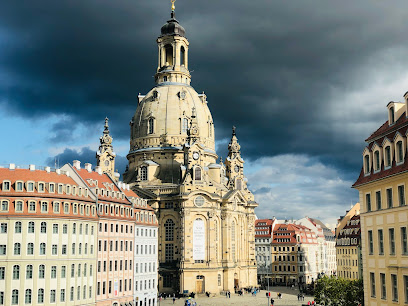
Großer trauernder Mann
0.5 km
A poignant bronze sculpture in Dresden, the Großer Trauernder Mann serves as a powerful memorial to the victims of the WWII bombing, inviting reflection on loss and resilience.
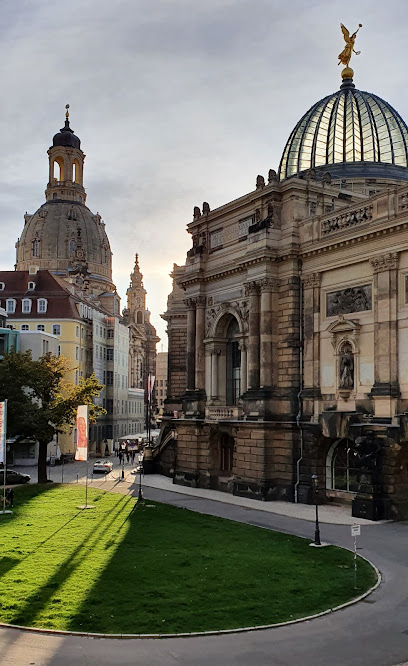
Hasenberg 1
0.6 km
Discover Dresden's New Synagogue: A modern architectural marvel built on history, symbolizing resilience and rebirth in the heart of the city's Old Town.
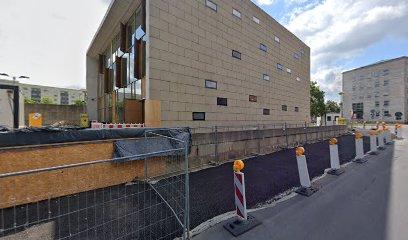
Memorial for Ludwig Richter (1898; Victor Eugen Kircheisen)
0.6 km
Explore the Memorial for Ludwig Richter in Dresden, a serene tribute to the acclaimed German painter surrounded by beautiful gardens and historical significance.
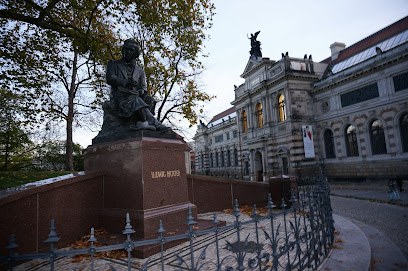
Künstliche Ruine, Denkmal
0.6 km
Discover Dresden's romantic side with a visit to the Künstliche Ruine in Bürgerwiese, a charming artificial ruin offering a picturesque escape and a glimpse into 19th-century aesthetics.
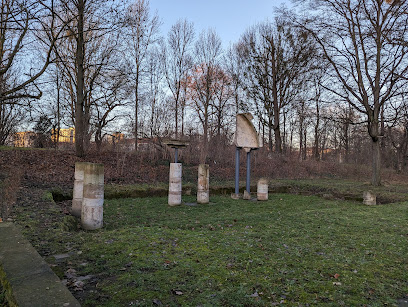
Dresden Armory
0.6 km
Discover a dazzling collection of ceremonial arms, armor, and Ottoman treasures inside Dresden Castle, revealing centuries of Saxon power and artistry.
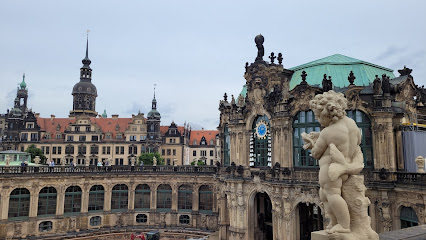
Statue des Hl. Dominikus
0.7 km
Discover the Statue of St. Dominic in Dresden's Stallhof, a serene monument amidst Renaissance splendor, offering a glimpse into the city's rich religious and artistic heritage and historical charm.
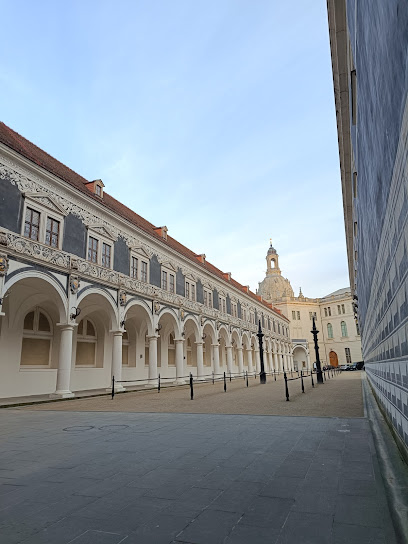
Dresden Castle
0.7 km
Explore the grandeur of Dresden Castle, a historical landmark showcasing exquisite art and royal heritage in the heart of Dresden.
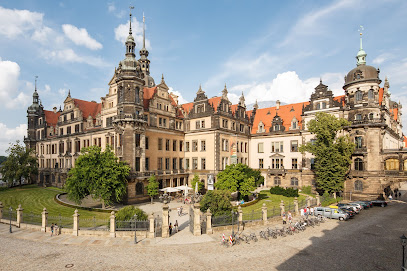
Denkmal "Friedrich August dem Gerechten"
0.7 km
Discover the grandeur of the Friedrich August Monument, an iconic symbol of Dresden's rich history and culture nestled in the heart of Altstadt.
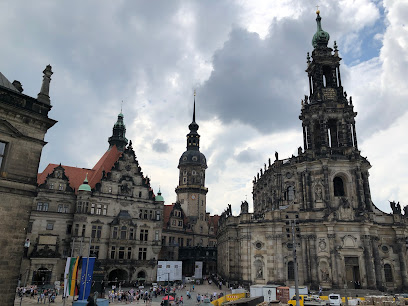
Green Vault
0.7 km
Explore the Green Vault in Dresden, an exquisite art museum showcasing royal treasures and historical artifacts in a breathtaking setting.
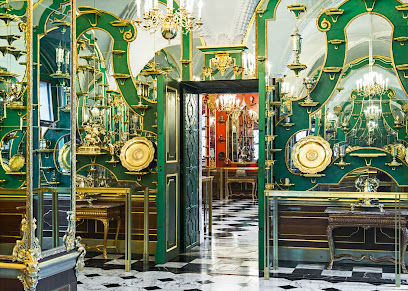
Hausmannsturm, Dresden
0.7 km
Explore the stunning Hausmannsturm in Dresden, a historical landmark offering breathtaking views and rich cultural heritage in the heart of the city.
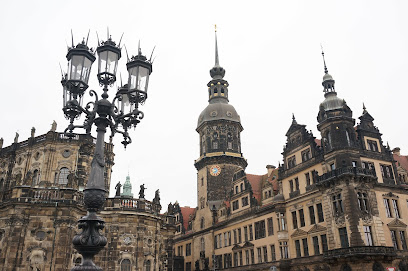
Schloßpl.
0.7 km
Experience Dresden's royal legacy at Schloßplatz, a meticulously restored square surrounded by architectural masterpieces and steeped in Saxon history.
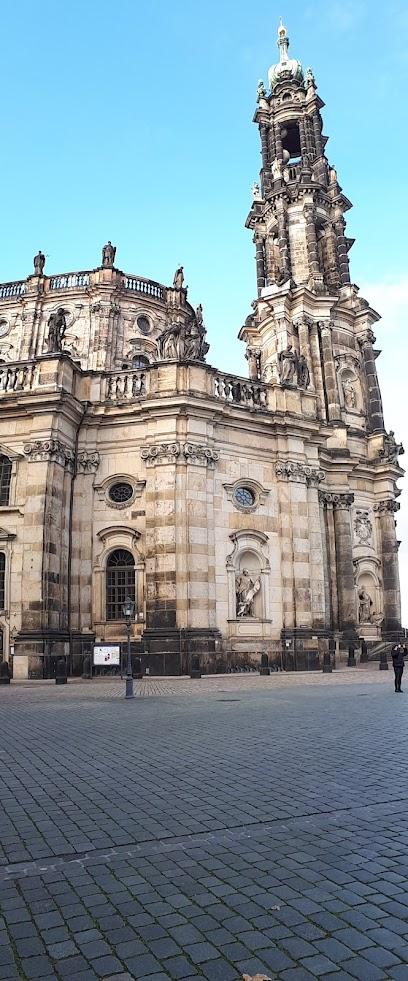
Unmissable attractions to see
Holy Cross Church
0.3 km
Discover the architectural beauty and cultural richness of the Holy Cross Church in Dresden, a must-visit landmark for every traveler.
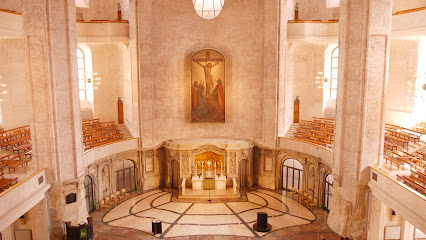
Julius Otto Monument
0.3 km
Discover the Julius Otto Monument in Dresden, a stunning historical landmark that celebrates the city's rich cultural heritage and artistic legacy.
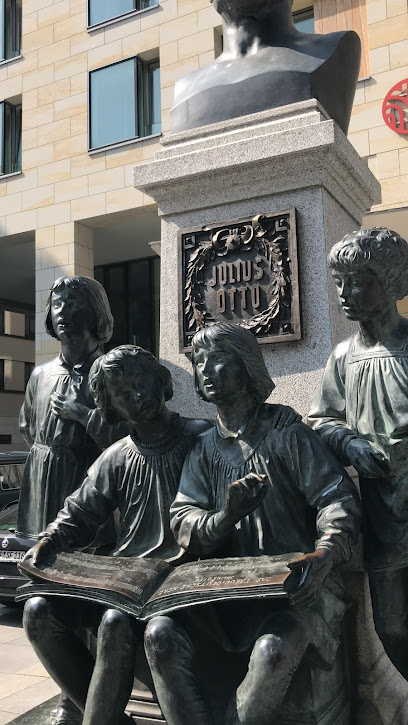
Dresden City Museum
0.3 km
Discover the captivating history and culture of Dresden at the city's premier museum, showcasing its rich heritage and artistic legacy.
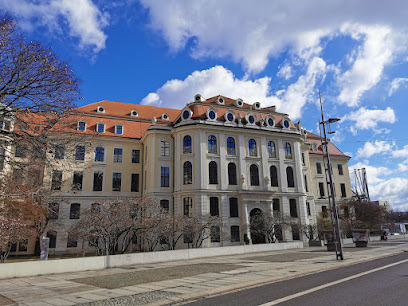
Altmarkt
0.4 km
Experience the vibrant Altmarkt in Dresden, where history meets modernity in a bustling town square filled with shops, cafés, and stunning architecture.
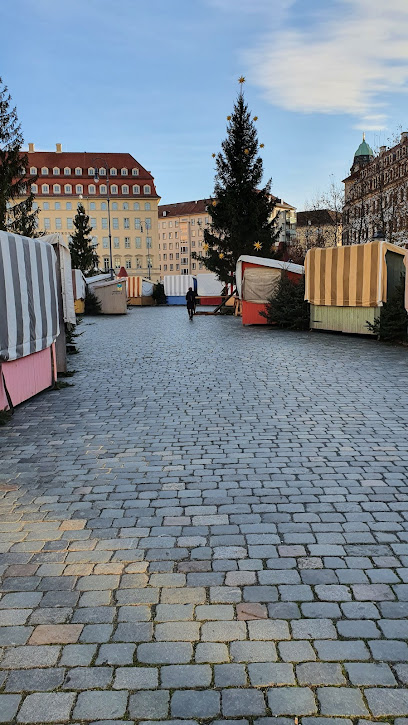
Neumarkt Dresden
0.4 km
Explore the historic charm of Neumarkt Dresden, a vibrant square filled with stunning baroque architecture, cultural events, and delightful cafes.
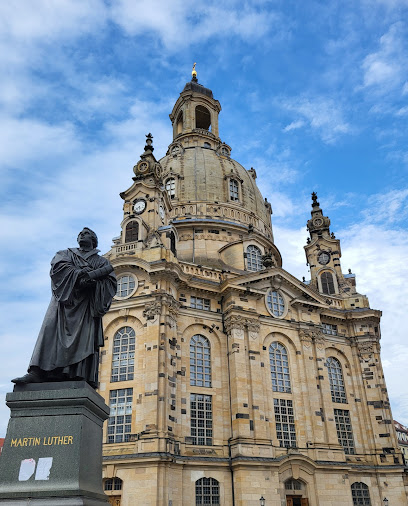
Palace of Culture
0.4 km
Experience the artistic heart of Dresden at the Palace of Culture, a vibrant hub for concerts, theater, and shopping in a stunning architectural setting.
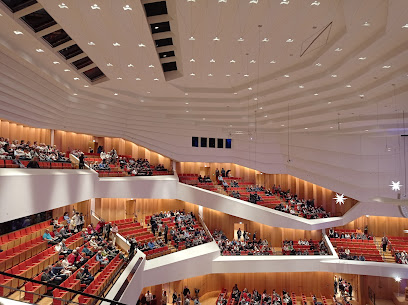
Neumarkt
0.4 km
Explore the historic Neumarkt Square in Dresden, where stunning architecture meets vibrant local culture and culinary delights.
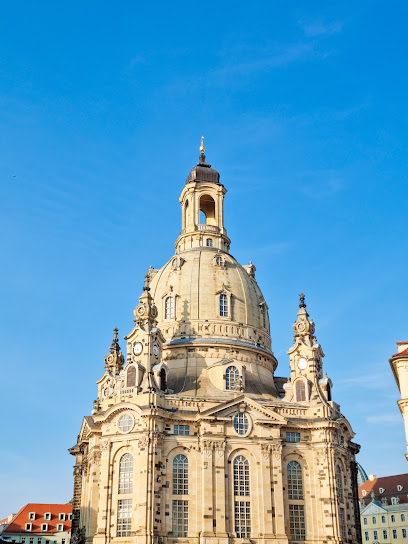
Martin Luther Statue
0.4 km
Explore the historic Martin Luther Statue in Dresden's Neumarkt Square, a symbol of the Protestant Reformation and architectural beauty.
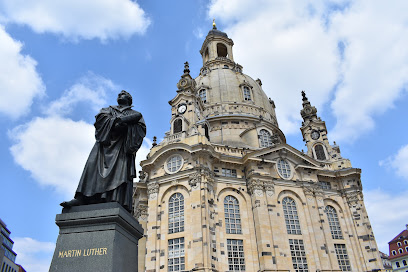
Altstadt Dresden
0.5 km
Explore the historic Altstadt Dresden, where stunning architecture meets rich cultural heritage, offering a unique travel experience in Germany.
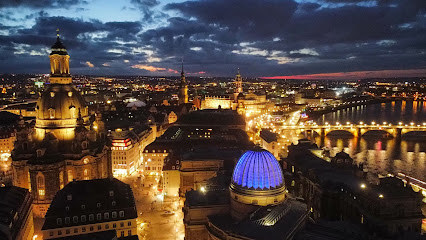
Frauenkirche Dresden
0.5 km
Discover the breathtaking Frauenkirche in Dresden, a Baroque masterpiece symbolizing resilience and beauty in the heart of the city.
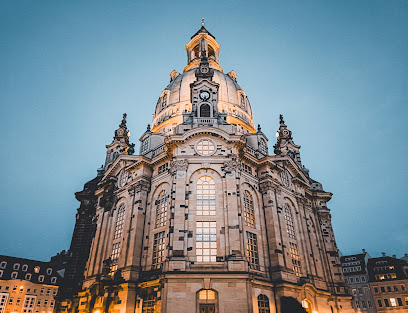
Dome ascent Frauenkirche Dresden
0.5 km
Discover breathtaking views and rich history at the Frauenkirche Dome in Dresden, a must-visit tourist attraction for every traveler.
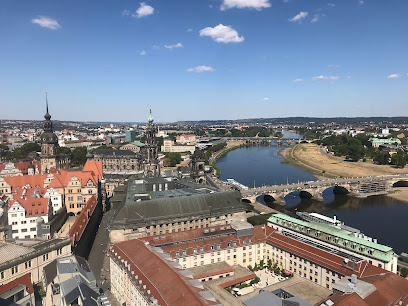
Gläsernes Labor im Deutschen Hygiene-Museum Dresden (DHMD)
0.5 km
Explore the interactive Gläsernes Labor at the German Hygiene Museum in Dresden, where science and health come alive for curious minds of all ages.
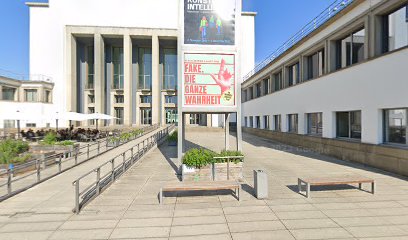
Dresden Transport Museum
0.5 km
Discover the evolution of transport at the Dresden Transport Museum, showcasing centuries of innovation in a captivating setting.
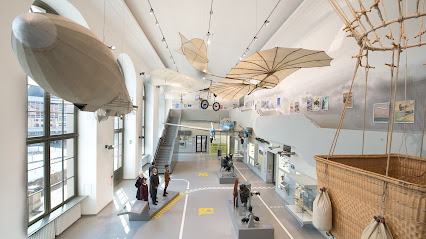
Albertinum
0.5 km
Explore the Albertinum, Dresden's premier art museum showcasing modern masterpieces and historical collections in a stunning architectural setting.
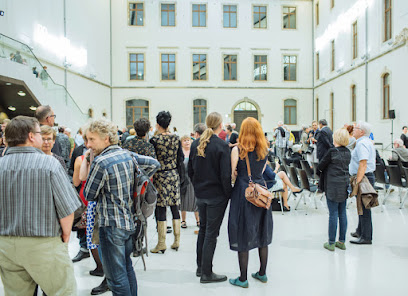
German Hygiene Museum
0.5 km
Explore health, hygiene, and cultural history at the German Hygiene Museum in Dresden, a unique attraction that captivates and educates.
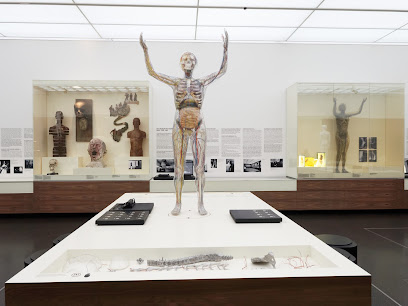
Essential places to dine
[m]eatery bar + restaurant
0.1 km
Discover exquisite steaks and American cuisine at [m]eatery bar + restaurant in Dresden – a must-visit destination for meat lovers.
![[m]eatery bar + restaurant](https://evendo-location-media.s3.amazonaws.com/RestaurantImages/812612d7-a467-41f7-ab3d-b2189bbc8d79)
Dresdner Trödelschänke
0.2 km
Discover authentic Saxon cuisine at Dresdner Trödelschänke in Dresden's Altstadt—a delightful fusion of tradition and modernity awaits.

Gänsedieb
0.2 km
Discover Gänsedieb in Dresden: A culinary haven blending local flavors with international cuisine for an unforgettable dining experience.
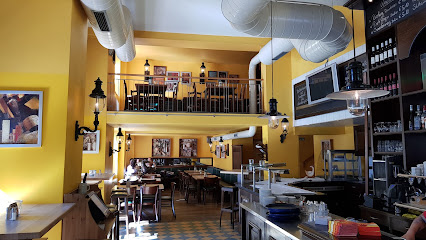
L'Osteria
0.3 km
Experience authentic Italian cuisine at L'Osteria in Dresden's Altstadt—delicious pizzas and warm hospitality await.
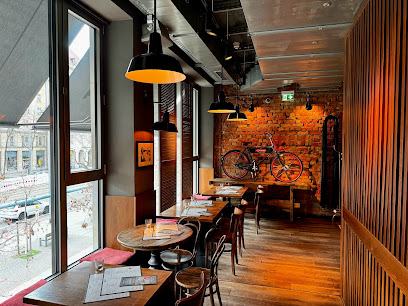
Restaurant de Saxe
0.3 km
Experience authentic German cuisine at Restaurant de Saxe, located in Dresden's historic Altstadt district.

Aposto Dresden
0.4 km
Experience authentic Italian cuisine at Aposto Dresden—where delicious flavors meet warm hospitality in a charming atmosphere.

DRESDEN 1900 Museumsgastronomie
0.4 km
Experience Dresden's culinary heritage at DRESDEN 1900 Museumsgastronomie - a perfect blend of history and flavor.
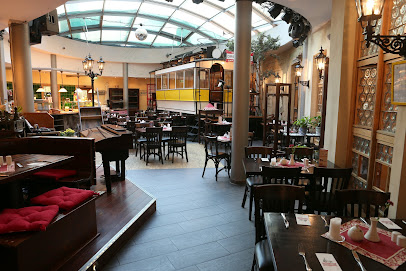
Wilma Wunder Dresden
0.4 km
Experience authentic German cuisine at Wilma Wunder in Dresden – where tradition meets modern culinary artistry.

VEN
0.4 km
Discover exquisite Mediterranean-inspired cuisine paired with fine German wines at VEN in Dresden's vibrant Altstadt.

HANS IM GLÜCK - DRESDEN Altmarkt
0.4 km
Discover gourmet burgers at HANS IM GLÜCK - DRESDEN Altmarkt; where taste meets style in the heart of Dresden.

Restaurant Moritz
0.4 km
Experience exquisite local cuisine at Restaurant Moritz in Dresden's historic Altstadt - where tradition meets modernity.

Augustiner an der Frauenkirche Restaurant
0.4 km
Savor authentic Bavarian cuisine and local brews at Augustiner an der Frauenkirche - where tradition meets taste in Dresden's vibrant heart.
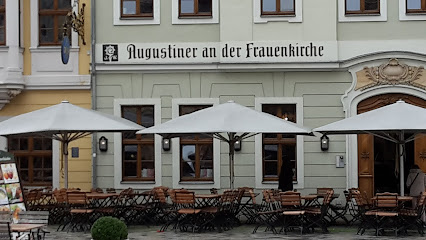
Hickory Dresden – Tapas BBQ & Smokehouse
0.5 km
Discover Hickory Dresden: Where American BBQ Meets Asian Fusion for an Unforgettable Dining Experience.

Coselpalais - Restaurant & Grand Café
0.5 km
Experience culinary excellence at Coselpalais - where traditional German flavors meet Mediterranean elegance in the heart of Dresden.
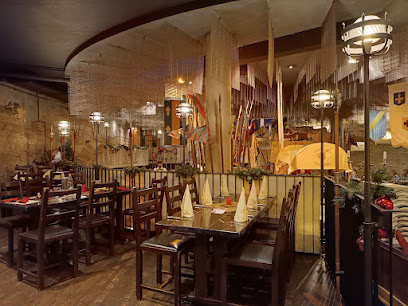
Pulverturm
0.5 km
Experience authentic German cuisine at Pulverturm in Dresden, where history meets flavor near the iconic Frauenkirche.
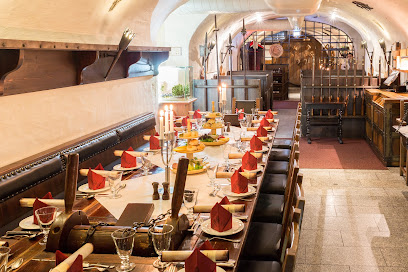
Markets, malls and hidden boutiques
Tradition & Form - Wendt und Kühn Fachhändler
0.3 km
Explore Tradition & Form - Wendt und Kühn, a charming gift shop in Dresden, offering handcrafted antiques, Christmas decor, and enchanting music boxes.

Ullmann's Laden
0.3 km
Explore Ullmann's Laden in Dresden for exquisite leather goods and unique gifts that embody the spirit of craftsmanship and creativity.
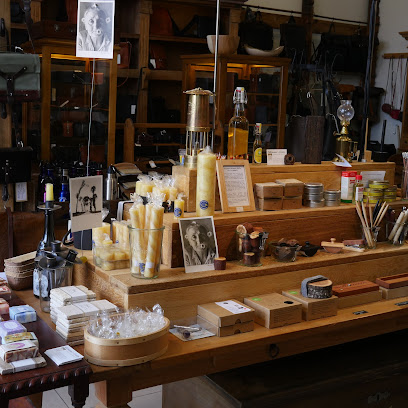
KULT Stores
0.4 km
Discover KULT Stores in Dresden for a unique shopping experience filled with trendy fashion and stylish accessories.

Antik Brocante Dresden - Brocante antique dining culture
0.4 km
Explore Antik Brocante Dresden, a must-visit gift shop offering a unique collection of antiques, home goods, and architectural salvage in the heart of Dresden.

BS Designer Outlet
0.4 km
Discover incredible deals and designer fashion at BS Designer Outlet in Dresden, the ultimate shopping destination for style enthusiasts.

10c dresden
0.4 km
Discover the essence of style at 10c Dresden, a chic fashion accessories store in the heart of the historic Altstadt district.
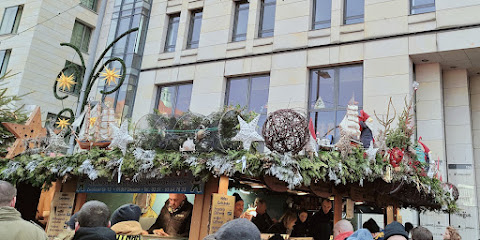
Dresden GIFTS + GOODS for you
0.4 km
Explore the heart of Dresden at GIFTS + GOODS, where local artisans offer unique souvenirs and treasures reflecting the city’s rich heritage.
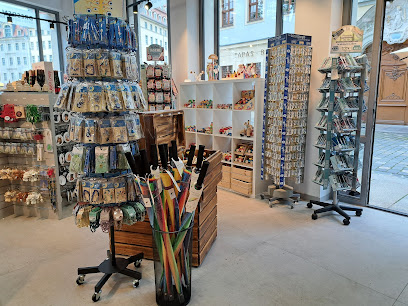
United Dresden GmbH
0.4 km
Discover unique souvenirs at United Dresden GmbH in the heart of Dresden's Altstadt, capturing the city's spirit and artistry.
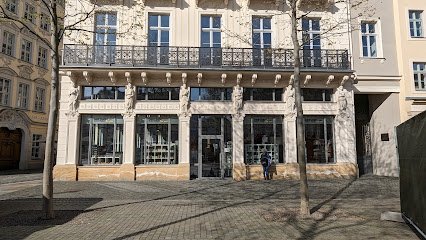
Elbenwald
0.4 km
Explore Elbenwald in Dresden for a unique shopping experience filled with fantasy-themed gifts, collectibles, and apparel that celebrate your favorite adventures.

A. Lange & Söhne Boutique Dresden
0.4 km
Discover the elegance of German watchmaking at A. Lange & Söhne Boutique in Dresden, where craftsmanship meets timeless luxury.
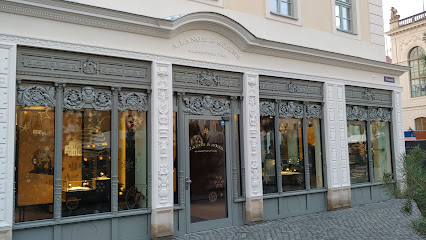
Remember Dresden Souvenir Shop
0.4 km
Explore the heart of Dresden through unique souvenirs and local art at Remember Dresden Souvenir Shop, a must-visit for all tourists.
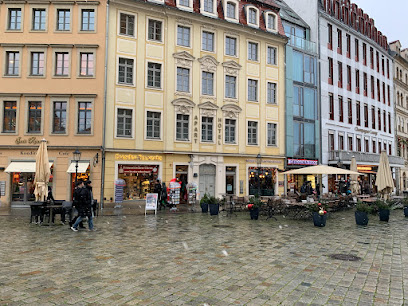
Dueamiche Store Dresden Altstadt
0.5 km
Discover unique fashion treasures at Dueamiche Store in Dresden's Altstadt, where style meets local charm in a delightful boutique atmosphere.
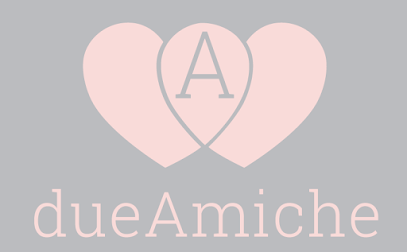
EGOIST Frauensache(n)
0.5 km
Explore EGOIST Frauensache(n) in Dresden for trendy women's clothing, elegant outerwear, and stylish footwear that elevate your fashion game.

Blue Tomato Shop Dresden
0.5 km
Explore Blue Tomato Shop in Dresden for the latest in sportswear, skateboards, and snowboards, all in a stylish urban setting.

Kunsthandwerk in der Altmarkt-Galerie
0.5 km
Discover unique handcrafted gifts and souvenirs at Kunsthandwerk in der Altmarkt-Galerie, a treasure trove of local artistry in Dresden.

Essential bars & hidden hideouts
Champagner Lounge
0.4 km
Experience the elegance of Champagner Lounge in Dresden, where a remarkable champagne selection meets a vibrant nightlife atmosphere.

Gin House Dresden
0.4 km
Discover the vibrant Gin House Dresden, where exceptional cocktails and a lively atmosphere await in the heart of the city!

Twist Bar
0.5 km
Experience the vibrant nightlife of Dresden at Twist Bar, where creative cocktails and a chic atmosphere await every visitor.

Roof-Top Bar im Vienna house
0.5 km
Discover the Roof-Top Bar in Vienna House: Where breathtaking views meet exquisite drinks in the heart of Dresden's vibrant nightlife.
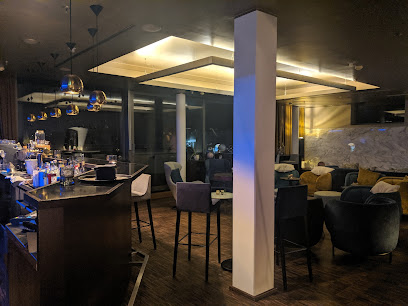
Shamrock Irish Bar & Restaurant
0.5 km
Discover Shamrock Irish Bar & Restaurant - an authentic Irish pub in the heart of Dresden, offering delightful cuisine and a lively atmosphere.

Schlossbar
0.6 km
Experience the elegance of Schlossbar in Dresden with exquisite drinks and a sophisticated atmosphere, perfect for unwinding after a day of exploration.
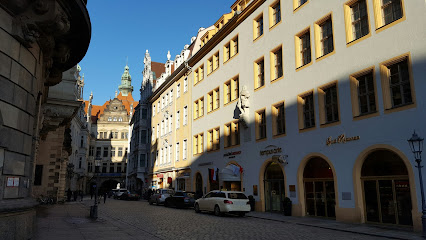
AMARO Bar - Dresden
0.6 km
Experience the vibrant nightlife of Dresden at AMARO Bar, where expertly crafted cocktails meet a cozy and inviting atmosphere.

Bar 1705 - Dresden
0.6 km
Experience unparalleled luxury at Bar 1705 in Dresden, where exquisite cocktails and a chic ambiance await you.

Cocktailbar Pervak
0.6 km
Experience the vibrant and innovative cocktail culture at Cocktailbar Pervak in the heart of Dresden's Altstadt, where every drink tells a story.
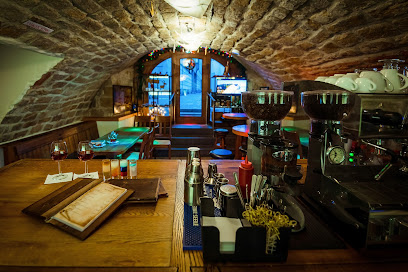
Pianobar
1.3 km
Discover the enchanting Pianobar in Dresden, where live music and exquisite cocktails create an unforgettable nightlife experience.
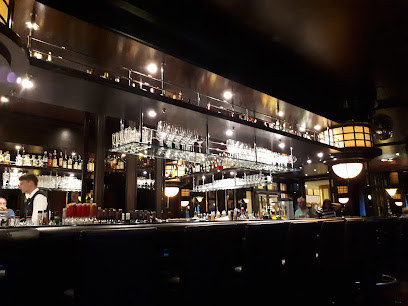
The Red Rooster - Dresden
1.3 km
Discover The Red Rooster in Dresden - a lively pub offering delicious food, a wide array of drinks, and a vibrant atmosphere perfect for socializing.
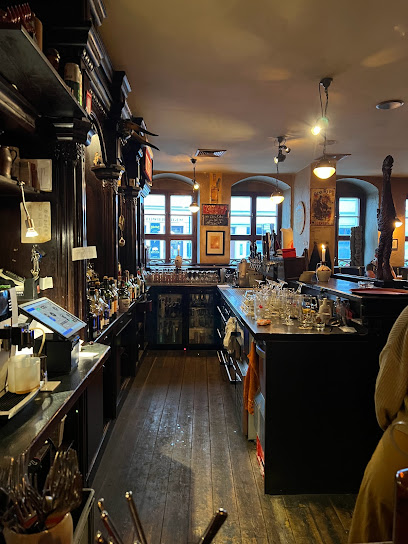
Volt Bar
1.4 km
Discover the lively Volt Bar in Dresden, blending exquisite drinks with a vibrant atmosphere for an unforgettable night out.

HERZ american bar - Dresden
1.6 km
Immerse yourself in the lively ambiance of HERZ American Bar in Dresden, serving exquisite cocktails and a taste of American bar culture.
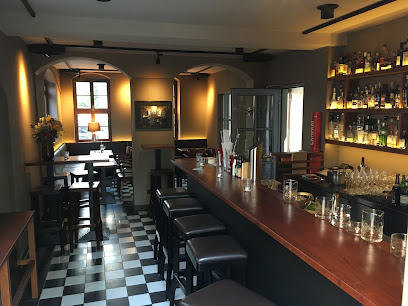
BBC – Bar Brasserie Cassis - Dresden
2.0 km
Discover the vibrant energy of BBC – Bar Brasserie Cassis, a top destination for drinks and light bites in Dresden's lively Neustadt district.

BBC Whisky & Gin House
2.0 km
Discover a refined selection of whiskies and gins in the heart of Dresden-Neustadt at BBC Whisky & Gin House, a premier bar for spirit enthusiasts.




